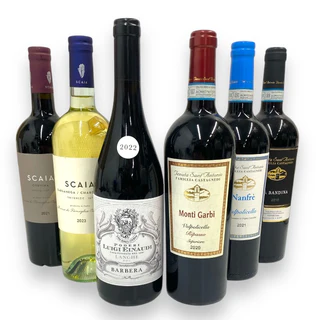Imagine a sip of wine dancing on your palate, revealing layers of flavors and captivating aromas. Did you know that the key to unlocking this symphony of senses lies in something as simple as the temperature at which you serve your wine? Welcome to the intriguing world of wine temperature, where every degree makes a difference. In this blog we embark on a journey to explore the importance of wine temperature and how it affects the feel, aromas and overall experience of the wines we cherish. Prepare to sip, taste and be mesmerized by the magic of wine temperature.
I. Why wine temperature is important
The science behind wine temperature
Wine is a complex drink with a delicate balance of chemical compounds. Temperature plays an important role in changing this composition. By understanding the optimum temperature range for specific wine styles, we can maintain the delicate balance between acidity, sweetness and tannins, allowing the wine to show its true potential.
The influence on aromas and smells
Have you noticed that wine flavors can vary depending on the temperature at which the wine is served? Cooler temperatures tend to suppress aromas, while warmer temperatures enhance them. When wine has reached its ideal temperature, fruity, floral and earthy notes come to life and provide a wonderful olfactory experience. By serving wine at the right temperature, we unlock a world of fascinating aromas that take the tasting experience to new heights.
Taming the tannins
Tannins, those delicious substances in red wines, can enhance or hinder the drinking experience. The temperature at which we serve red wines can significantly influence the perception of tannins. Cooler temperatures make tannins more pronounced and astringent, while slightly warmer temperatures soften and integrate them. By finding the right temperature, we can achieve a harmonious balance between structure and smoothness, making every sip an enjoyable journey.

II. Navigating the wine temperature spectrum
White wines
White wines offer a variety of styles, flavors and textures. From the fresh Sauvignon Blanc to the tasty Chardonnay , each variety requires its own temperature treatment. In general, you drink fresher, light and dry white wines, such as sauvignon blanc or pinot gris, colder (7-10 degrees Celsius). A fuller white wine, such as a wood-aged chardonnay, can really get a little more temperature to express its aromas to perfection. These are perfect between 10-14 degrees.
Red wines
Red wines, known for their rich flavors and velvety texture, deserve our utmost attention when it comes to temperature. Lighter bodied red wines, such as Pinot Noir or a Beaujolais , do well when served slightly chilled to emphasize their vibrant fruitiness (14-16 degrees). Medium to full bodied red wines, such as Merlot and Cabernet Sauvignon , unfold their complexity when served at a moderate temperature (16-18 degrees). It is nice to experiment with this: take a cabernet sauvignon and drink it slightly chilled at 14 degrees and then at 18 degrees. You will then see how much effect temperature has.
(If you want to understand the differences between red wines more clearly, also check out this blog: The Ultimate Guide to Understanding Red Wine Styles: From Bold and Spicy to Fruity and Light )
Sparkling wines
Sparkling wines add a festive touch to any occasion. To fully experience the magic of bubbles, it is essential to serve them at the right temperature. Refrigerating too much can dull the flavor, while serving too hot can reduce the desired fizz. The temperature range of these wines is 6-10 degrees Celsius.
III. The wine temperature ritual
From the cellar to the table
A bottle of wine's journey doesn't end when it leaves the cellar. The right temperature transitions are crucial to preserve the wine's integrity and ensure a wonderful drinking experience. From storage to decanting and finally to the table, understanding temperature nuances and making the necessary adjustments ensures that each bottle reaches its full potential and tantalises your taste buds with every pour.
The art of wine chilling
In our search for the perfect wine temperature, we can use a range of tools and techniques. From wine fridges and coolers to simple ice buckets, there are options galore for every occasion. In addition, with a few clever tricks you can improvise a cooling solution, even if you don't have any special equipment. Master the art of wine chilling to ensure each bottle is served at the optimum temperature, taking your wine experience to new heights.
Conclusion
As we conclude our exploration of the art of wine temperature, let's not underestimate the impact a few degrees can have on our wine enjoyment. By paying attention to the temperature at which we serve our wines, we unlock a wealth of flavours, aromas and delicious sensations. So the next time you uncork a bottle, take a moment to think about the temperature and let your taste buds embark on a remarkable journey. Cheers to the magic of wine temperature and the pleasure you get from every sip!






